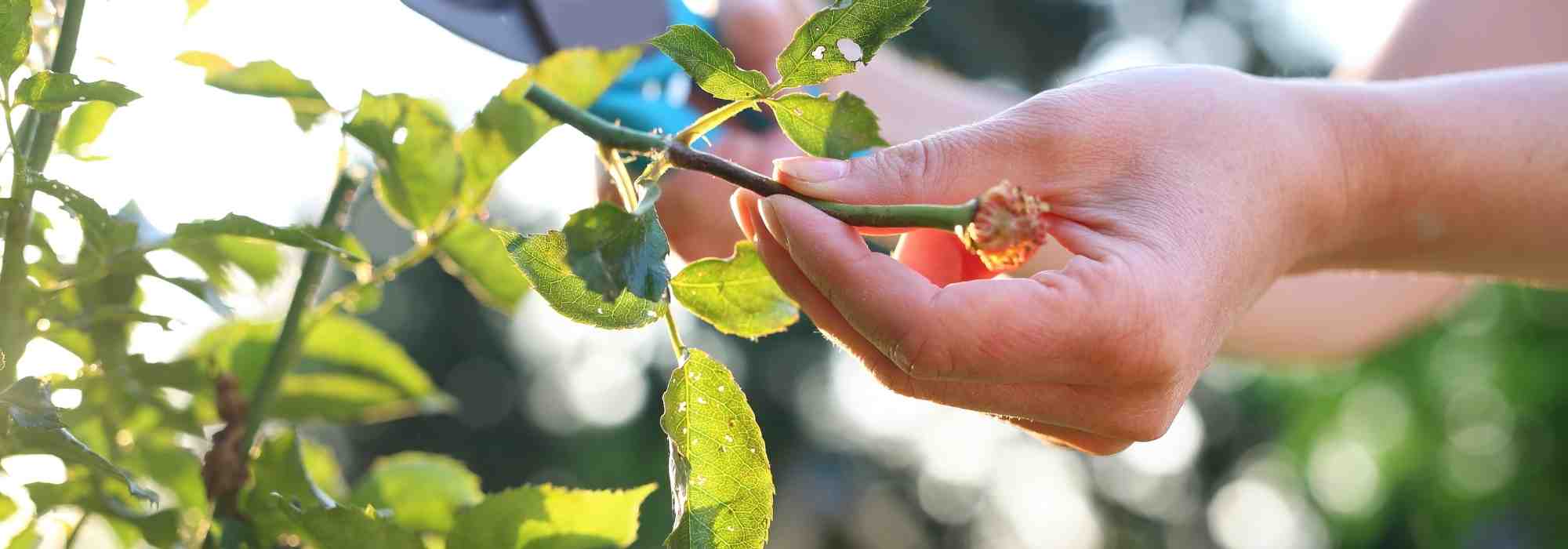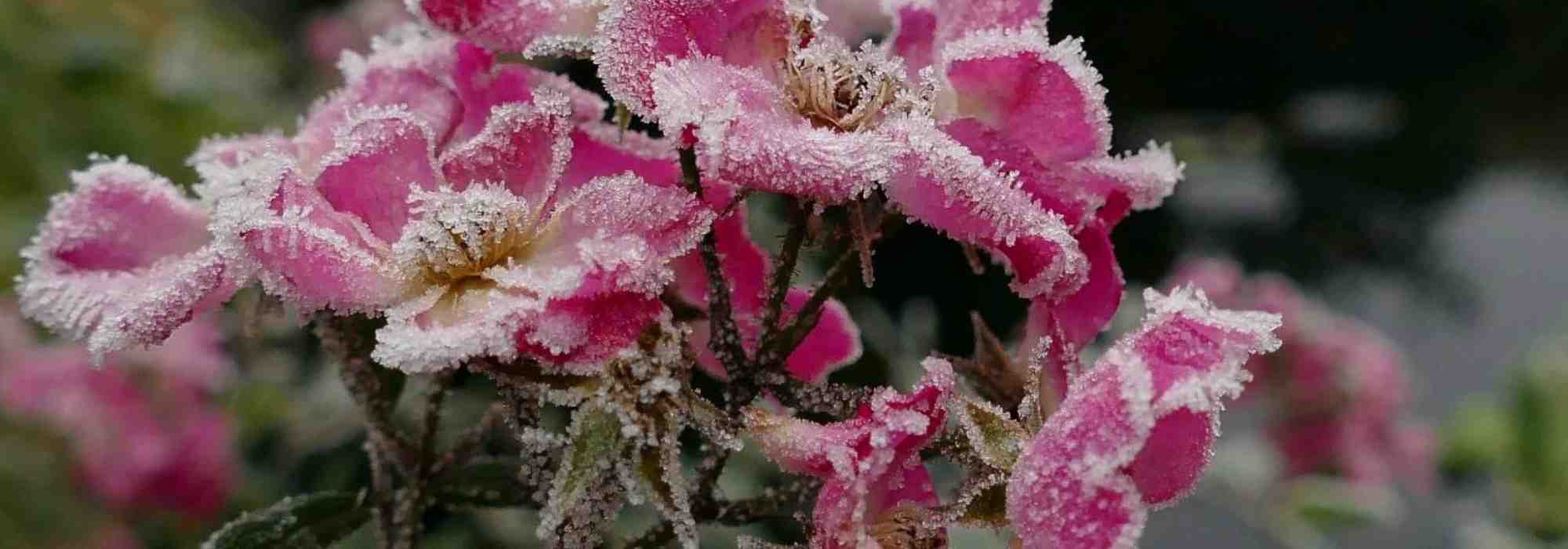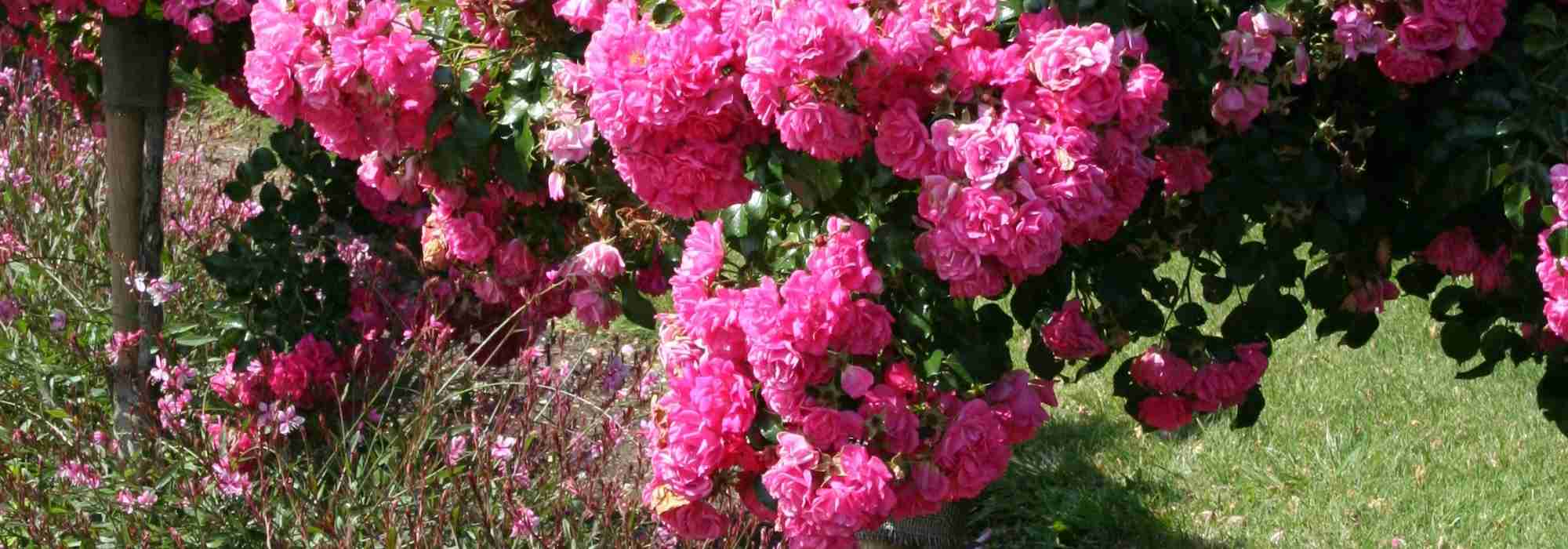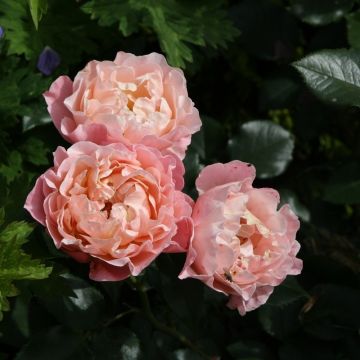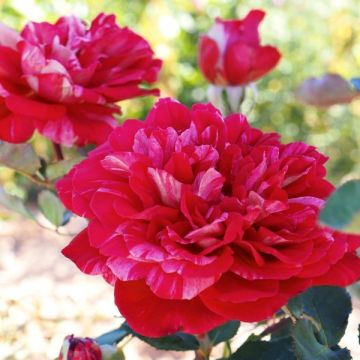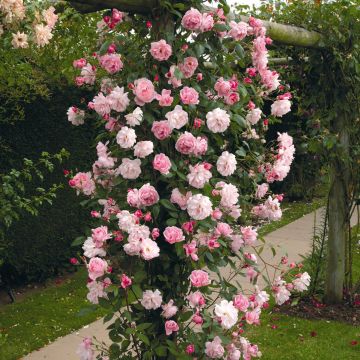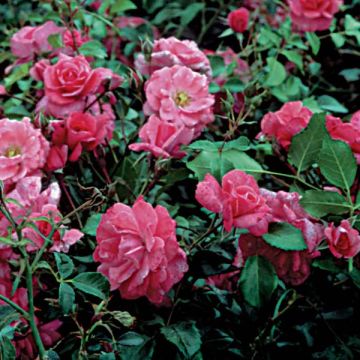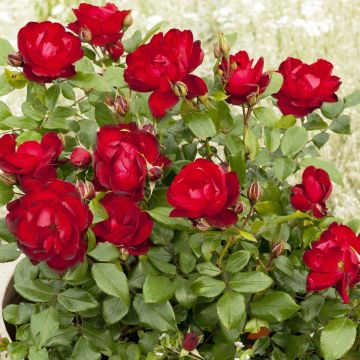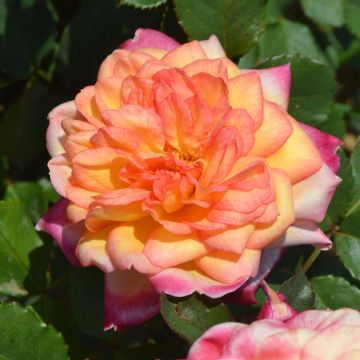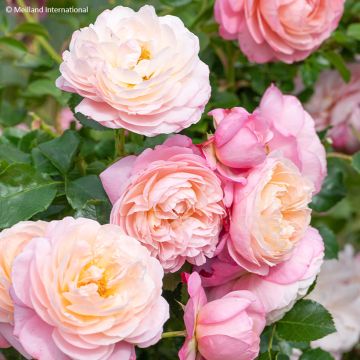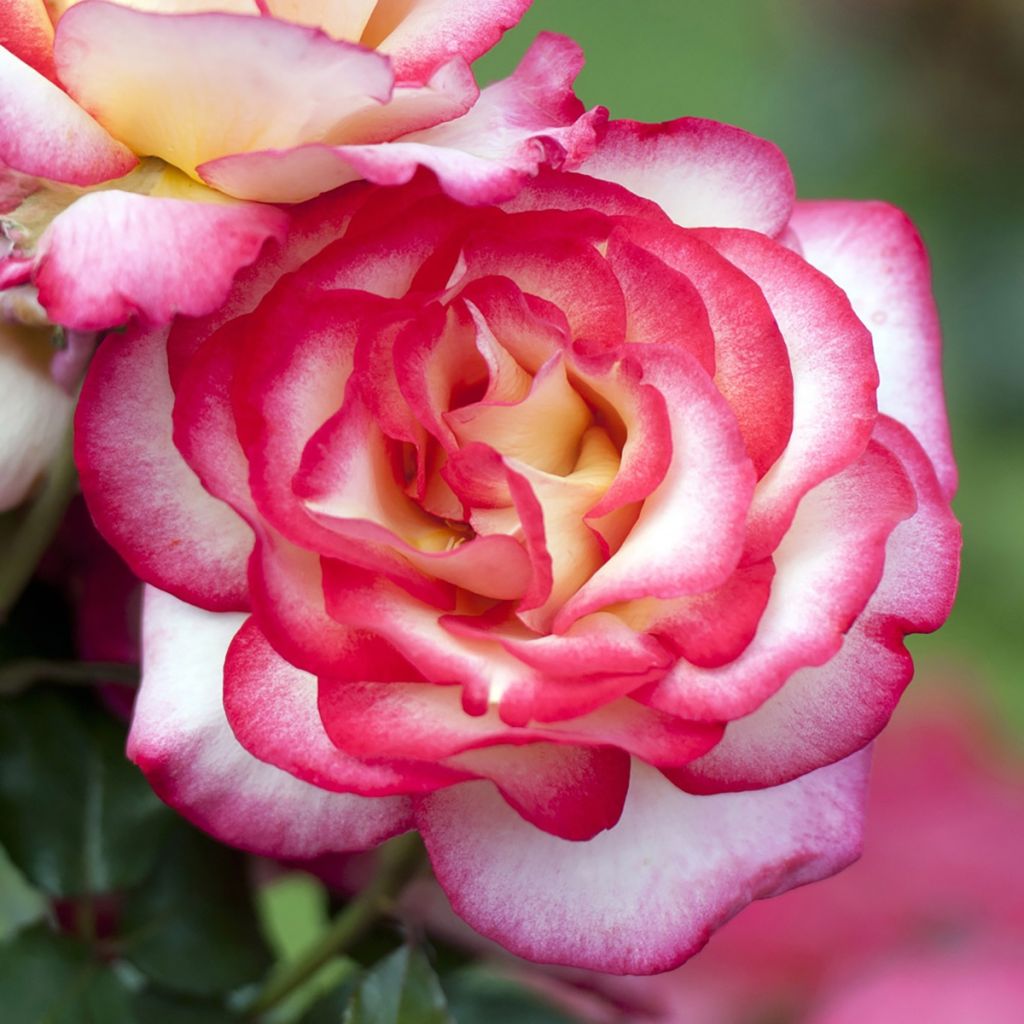

Rosa Leo Ferré - Standard Rose
View more pictures
Hide images
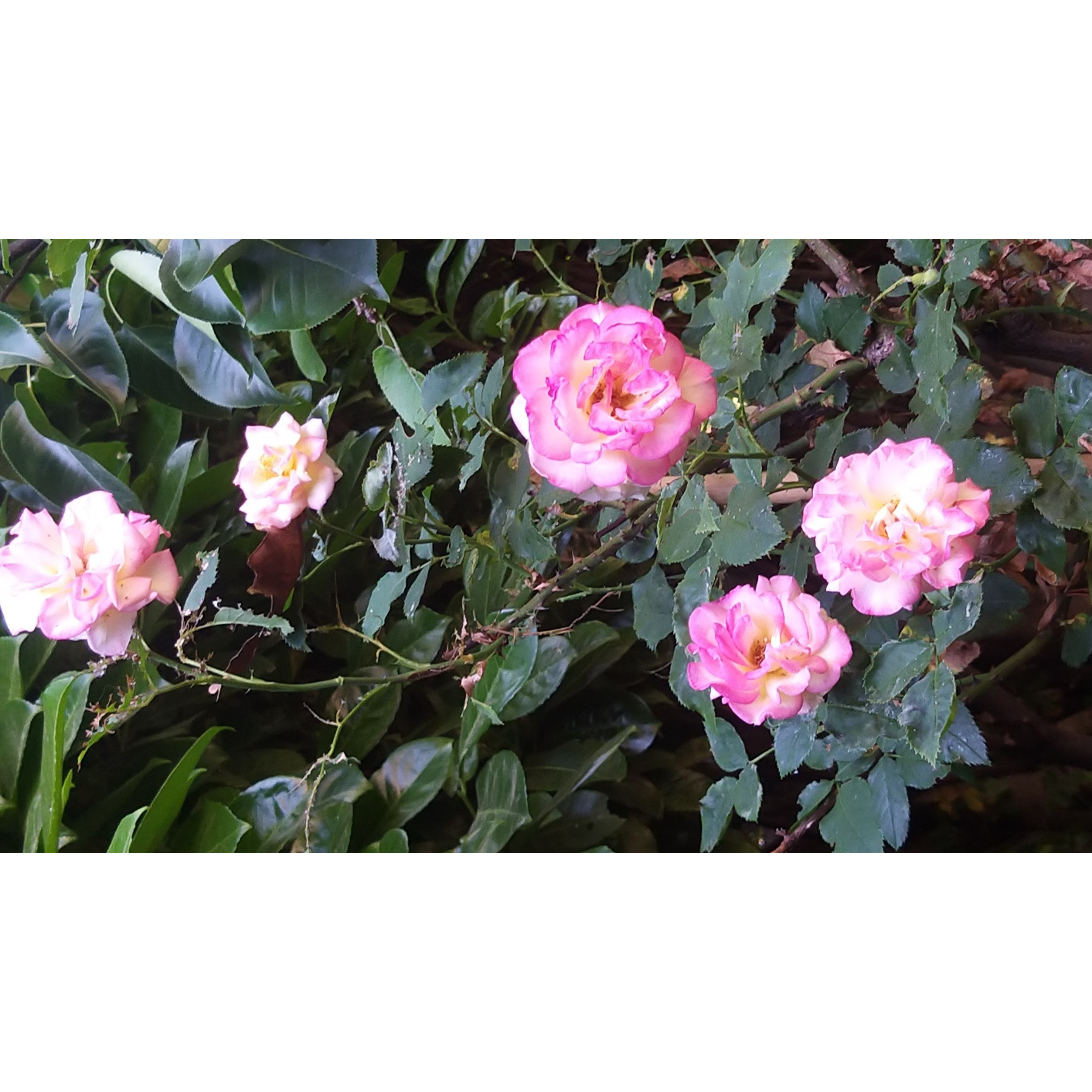
Thierry P.

June flowering - image 14
Thierry P. • 84 FR
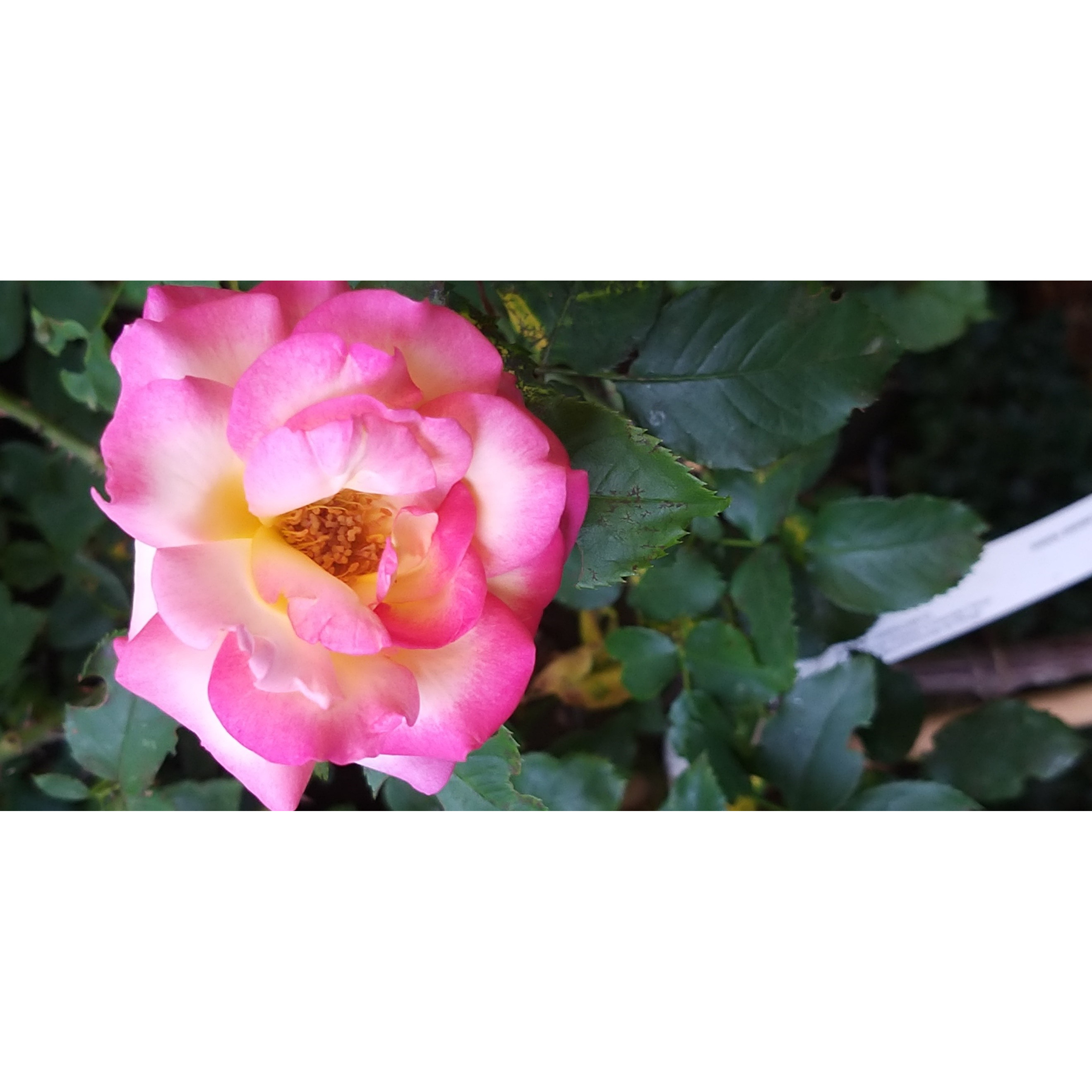
Thierry P.

Flowering in May - image 7
Thierry P. • 84 FR
Rosa Leo Ferré - Standard Rose
Rosa Leo Ferré 'Adabiterse'
Thanks to M.P. & E.G., the bare-root standard rose received is very dehydrated but still appears healthy to me. Planted quickly near the 'Papi Delbard' variety, I am now waiting for it to take root... or not? Just the opinion of an amateur who has successfully planted over 860 different rose varieties in their garden.
Thierry, 15/03/2021
Special offer!
Receive a €20 voucher for any order over €90 (excluding delivery costs, credit notes, and plastic-free options)!
1- Add your favorite plants to your cart.
2- Once you have reached €90, confirm your order (you can even choose the delivery date!).
3- As soon as your order is shipped, you will receive an email containing your voucher code, valid for 3 months (90 days).
Your voucher is unique and can only be used once, for any order with a minimum value of €20, excluding delivery costs.
Can be combined with other current offers, non-divisible and non-refundable.
Home or relay delivery (depending on size and destination)
Schedule delivery date,
and select date in basket
We guarantee the quality of our plants for a full growing cycle, and will replace at our expense any plant that fails to recover under normal climatic and planting conditions.
Description
The 'Léo Ferré' Standard Rose forms a small tree with a compact crown adorned with large original roses featuring a contrasting colour. Its turbinate flowers and overall bicolour display white petals with a yellow base edged with carmine red. This variety will also be appreciated from June to October for its respectable disease resistance. Like all standard roses, it thrives in prominent positions in the garden or in a container on the patio. Its roses are also long-lasting in a vase.
Standard roses are created through a process of grafting. A selected variety, such as Léo Ferré, is grafted onto a different rose stem, such as Rosa canina, R. laxa or R. multiflora. The graft is done at a specific height, usually around 90-100 cm (35-39 inches) from the ground. It is recommended to protect the rootstock during winter in extremely cold regions.
The 'Léo Ferré' Rose (Adabiterse) is part of the hybrid teas, recognisable by the beautiful turbinate shape of their flowers. It is a creation by Michel Adam dating back to 2006. Grafted on a stem, it has a characteristic habit with a compact crown. Its flowers are double, 12 to 14 cm (5 to 6in) wide, slightly flattened. The robust prickly branches bear healthy foliage, reddish when young, becoming dark green and glossy. Its disease resistance is good under adequate growing conditions. The flowers are solitary, carried by long and sturdy stems. The plant is leafless in winter.
This 'Léo Ferré' Standard Rose, with its tree-like silhouette and large brightly coloured flowers, will find its place in the centre of a large rose bed, as a standalone feature in a well-maintained garden, in a row along a pathway, or even in a container on the terrace. It pairs perfectly with shrub roses and pretty and easy-to-grow perennials such as perennial geraniums (Geranium Blue Cloud, Anne Folkard, Nimbus, Orion), bellflowers (lactiflora, rapunculoides), catmints, snapdragons, foxgloves. Its flowers can create cheerful bouquets, with fern foliage, for example.
Plant habit
Flowering
Foliage
Botanical data
Rosa
Leo Ferré 'Adabiterse'
Rosaceae
Cultivar or hybrid
Planting and care
To install your Standard 'Léo Ferré' rose, work the soil to a depth of 40 cubic cm, crumbling the soil and adding an amendment such as blood, fish and bone at the bottom of the planting hole. Position your plant by generously covering the top of the root ball with 3 cm (1in) of soil, backfill, and water to eliminate air pockets. Regular watering is necessary for a few weeks in dry weather to facilitate root growth. Also, remember to provide your Standard rose with special rose fertiliser to stimulate flowering.
If you live in an area with very cold winters, protect the graft of standard roses (the "trunk") by wrapping it with a thick winter cover.
Pruning of repeat-flowering roses should be done towards the end of winter. If the size of the plant is bothering you, you can shorten it, but avoid cutting it back too much as it may affect its flowering. However, you can remove dead wood and unsightly branches to thin out the plant. Removing faded flowers throughout the summer encourages even more abundant blooming.
Roses may develop unsightly spots at the end of summer, but this is a natural occurrence and doesn't harm the rose's growth.
Planting period
Intended location
Care
Planting & care advice
-
, onOrder confirmed
Reply from on Promesse de fleurs
Similar products
Haven't found what you were looking for?
Hardiness is the lowest winter temperature a plant can endure without suffering serious damage or even dying. However, hardiness is affected by location (a sheltered area, such as a patio), protection (winter cover) and soil type (hardiness is improved by well-drained soil).

Photo Sharing Terms & Conditions
In order to encourage gardeners to interact and share their experiences, Promesse de fleurs offers various media enabling content to be uploaded onto its Site - in particular via the ‘Photo sharing’ module.
The User agrees to refrain from:
- Posting any content that is illegal, prejudicial, insulting, racist, inciteful to hatred, revisionist, contrary to public decency, that infringes on privacy or on the privacy rights of third parties, in particular the publicity rights of persons and goods, intellectual property rights, or the right to privacy.
- Submitting content on behalf of a third party;
- Impersonate the identity of a third party and/or publish any personal information about a third party;
In general, the User undertakes to refrain from any unethical behaviour.
All Content (in particular text, comments, files, images, photos, videos, creative works, etc.), which may be subject to property or intellectual property rights, image or other private rights, shall remain the property of the User, subject to the limited rights granted by the terms of the licence granted by Promesse de fleurs as stated below. Users are at liberty to publish or not to publish such Content on the Site, notably via the ‘Photo Sharing’ facility, and accept that this Content shall be made public and freely accessible, notably on the Internet.
Users further acknowledge, undertake to have ,and guarantee that they hold all necessary rights and permissions to publish such material on the Site, in particular with regard to the legislation in force pertaining to any privacy, property, intellectual property, image, or contractual rights, or rights of any other nature. By publishing such Content on the Site, Users acknowledge accepting full liability as publishers of the Content within the meaning of the law, and grant Promesse de fleurs, free of charge, an inclusive, worldwide licence for the said Content for the entire duration of its publication, including all reproduction, representation, up/downloading, displaying, performing, transmission, and storage rights.
Users also grant permission for their name to be linked to the Content and accept that this link may not always be made available.
By engaging in posting material, Users consent to their Content becoming automatically accessible on the Internet, in particular on other sites and/or blogs and/or web pages of the Promesse de fleurs site, including in particular social pages and the Promesse de fleurs catalogue.
Users may secure the removal of entrusted content free of charge by issuing a simple request via our contact form.
The flowering period indicated on our website applies to countries and regions located in USDA zone 8 (France, the United Kingdom, Ireland, the Netherlands, etc.)
It will vary according to where you live:
- In zones 9 to 10 (Italy, Spain, Greece, etc.), flowering will occur about 2 to 4 weeks earlier.
- In zones 6 to 7 (Germany, Poland, Slovenia, and lower mountainous regions), flowering will be delayed by 2 to 3 weeks.
- In zone 5 (Central Europe, Scandinavia), blooming will be delayed by 3 to 5 weeks.
In temperate climates, pruning of spring-flowering shrubs (forsythia, spireas, etc.) should be done just after flowering.
Pruning of summer-flowering shrubs (Indian Lilac, Perovskia, etc.) can be done in winter or spring.
In cold regions as well as with frost-sensitive plants, avoid pruning too early when severe frosts may still occur.
The planting period indicated on our website applies to countries and regions located in USDA zone 8 (France, United Kingdom, Ireland, Netherlands).
It will vary according to where you live:
- In Mediterranean zones (Marseille, Madrid, Milan, etc.), autumn and winter are the best planting periods.
- In continental zones (Strasbourg, Munich, Vienna, etc.), delay planting by 2 to 3 weeks in spring and bring it forward by 2 to 4 weeks in autumn.
- In mountainous regions (the Alps, Pyrenees, Carpathians, etc.), it is best to plant in late spring (May-June) or late summer (August-September).
The harvesting period indicated on our website applies to countries and regions in USDA zone 8 (France, England, Ireland, the Netherlands).
In colder areas (Scandinavia, Poland, Austria...) fruit and vegetable harvests are likely to be delayed by 3-4 weeks.
In warmer areas (Italy, Spain, Greece, etc.), harvesting will probably take place earlier, depending on weather conditions.
The sowing periods indicated on our website apply to countries and regions within USDA Zone 8 (France, UK, Ireland, Netherlands).
In colder areas (Scandinavia, Poland, Austria...), delay any outdoor sowing by 3-4 weeks, or sow under glass.
In warmer climes (Italy, Spain, Greece, etc.), bring outdoor sowing forward by a few weeks.


































